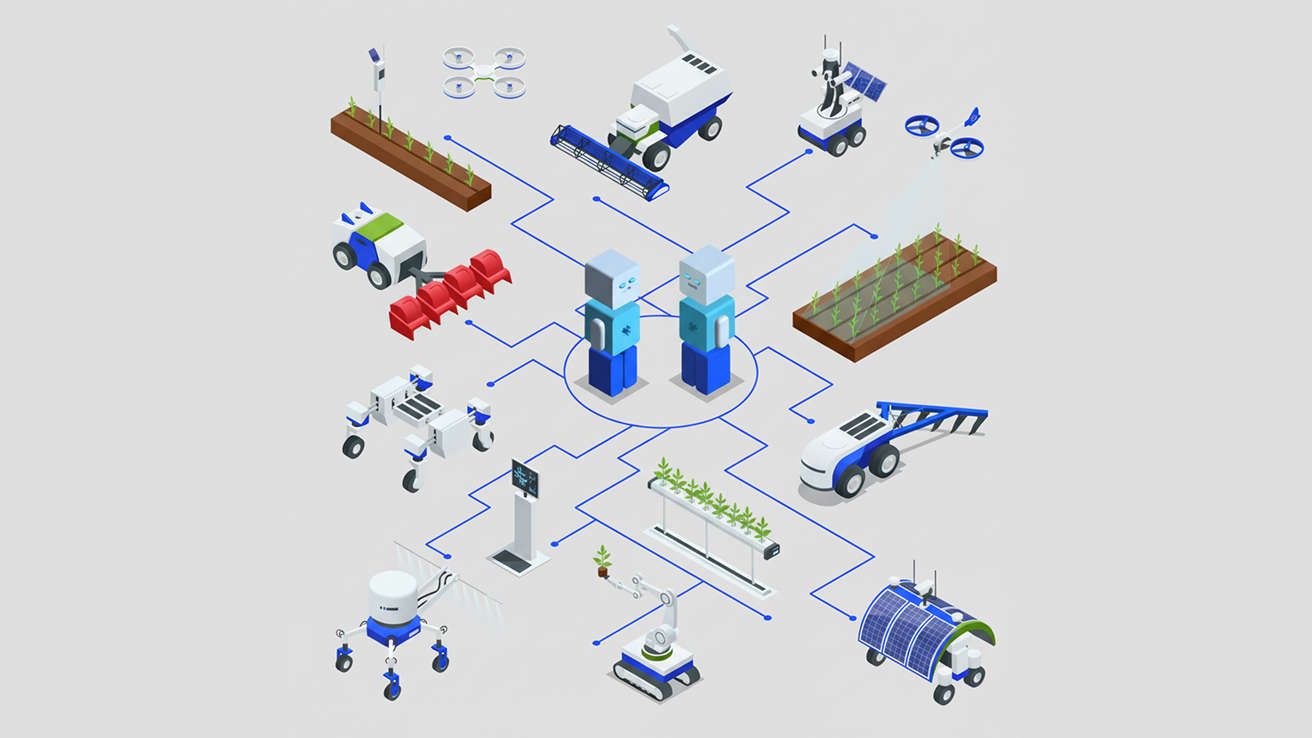
Digital twin technology has evolved far beyond its origins in industrial manufacturing. Today, this powerful concept creating virtual replicas of physical systems that can be simulated, tested, and optimized without risk, is revolutionizing two seemingly disparate domains: government cybersecurity and agricultural robotics.
Digital Twins in Cybersecurity: Testing Without Risk
Government agencies face an increasingly complex cybersecurity landscape. Nation-state actors, sophisticated criminal organizations, and even insider threats constantly probe for vulnerabilities. Traditional approaches to security testing, penetration testing on live systems carry inherent risks. Test too aggressively, and you might disrupt critical services. Test too conservatively, and you miss vulnerabilities that attackers will exploit.
Digital twins offer an elegant solution to this dilemma. By creating software-based replicas of real-world networks, government agencies can simulate cyberattacks, validate security controls, and test response procedures without any risk to actual operations.
These aren't simple network simulations. Modern cybersecurity digital twins replicate the full complexity of production environments, every server, every endpoint, every connection, every security control. More importantly, they replicate the data flows, user behaviors, and operational patterns that characterize real network activity.
The Testing Advantage
With a digital twin, security teams can:
The cost savings are substantial. Rather than building expensive physical test environments or risking disruptions to live systems, agencies can spin up digital twins on-demand, run comprehensive tests, and deploy proven configurations with confidence.
Beyond Testing: Continuous Validation
Perhaps most valuable is the ability to use digital twins for continuous security validation. As networks evolve, new applications deployed, configurations changed, systems updated, the digital twin evolves in parallel. Security teams can continuously test whether their defenses remain effective against the latest threat intelligence, identifying gaps before attackers exploit them.
This represents a fundamental shift from periodic security assessments to continuous, proactive security validation. In a world where threats evolve daily, this capability is increasingly essential.
Agricultural Robotics: Precision Harvesting Through Digital Twins
On a completely different frontier, researchers in China have demonstrated how digital twins can optimize agricultural robotics in ways previously impossible. They've developed a digital twin greenhouse system for robotic tomato harvesting that achieves remarkable efficiency and precision.
The system uses a slidable depth camera to create detailed 3D models of tomato plants, capturing the spatial distribution of fruits, their ripeness levels, and growth states in real-time. This digital twin of the greenhouse enables the robotic harvester to make intelligent decisions about which fruits to pick, the optimal path to reach them, and the gentle grasping force required to avoid damage.
The Numbers Are Impressive
The system reduces average picking time to just 7.4 seconds per fruit, a rate that rivals or exceeds human pickers while maintaining consistent quality and avoiding crop damage. More importantly, because the system builds a comprehensive digital model of the greenhouse, it can optimize harvesting strategies beyond individual fruits.
The digital twin enables the robot to:
Broader Agricultural Implications
This application of digital twins to agricultural robotics points toward a broader transformation in farming. As labor shortages intensify globally and the need for sustainable, efficient food production grows, precision agriculture powered by robotics and AI becomes increasingly critical.
Digital twins enable farmers to optimize every aspect of cultivation, from planting density and irrigation schedules to pest management and harvest timing. When combined with autonomous robots that can execute these optimized strategies, the result is agriculture that is more productive, more sustainable, and more resilient.
The Common Thread
What connects these seemingly disparate applications, government cybersecurity and greenhouse robotics, is the fundamental value proposition of digital twins: the ability to simulate, test, and optimize complex systems in a risk-free virtual environment before deploying changes to the real world.
Whether you're defending a critical network infrastructure or harvesting tomatoes, digital twins provide visibility, predictability, and control that would be impossible to achieve through trial and error on live systems.
As digital twin technology continues to mature and becomes more accessible, we can expect to see it applied to an ever-widening range of domains. The common pattern will remain: wherever the cost or risk of real-world experimentation is high, digital twins offer a safer, faster, more efficient alternative.